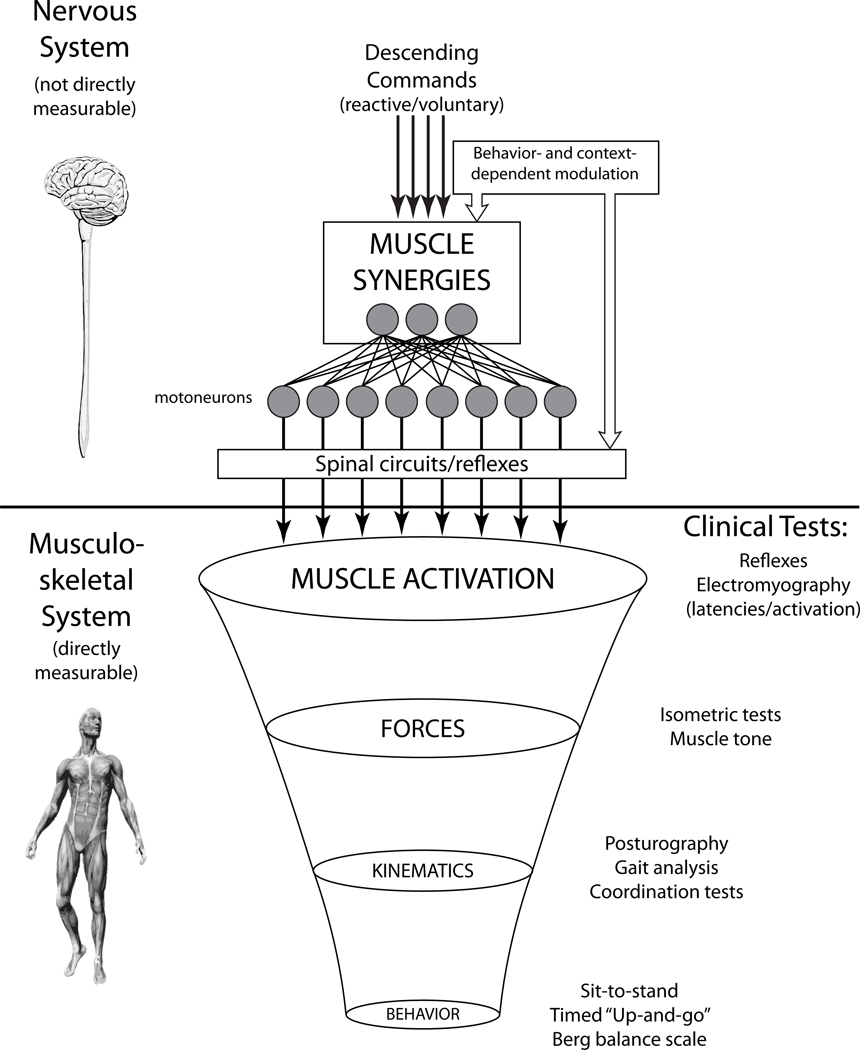Figure 1.
Conceptual model of motor coordination. Although there are many competing influences and complex circuits in the nervous system, motoneurons represent the motor output of the nervous system and activate the musculature. The existing muscle activation patterns give rise to a smaller set of producible forces, which in turn produces a smaller set of kinematics and, ultimately, an even smaller set of motor behaviors. Clinical motor tests mainly focus on these musculoskeletal outcomes, as the nervous system is not directly measurable. We propose that muscle synergies reflect the underlying neural structure of muscle activation and can be accessed through a variety of neural circuits. The resultant EMG patterns reflect a superposition of muscle synergy activation and local circuits, both of which are subject to behavior and context dependent modulation. Using the muscle synergy hypothesis as a framework, it is possible to identify the functional significance of individual muscle activity and muscle coordination.

